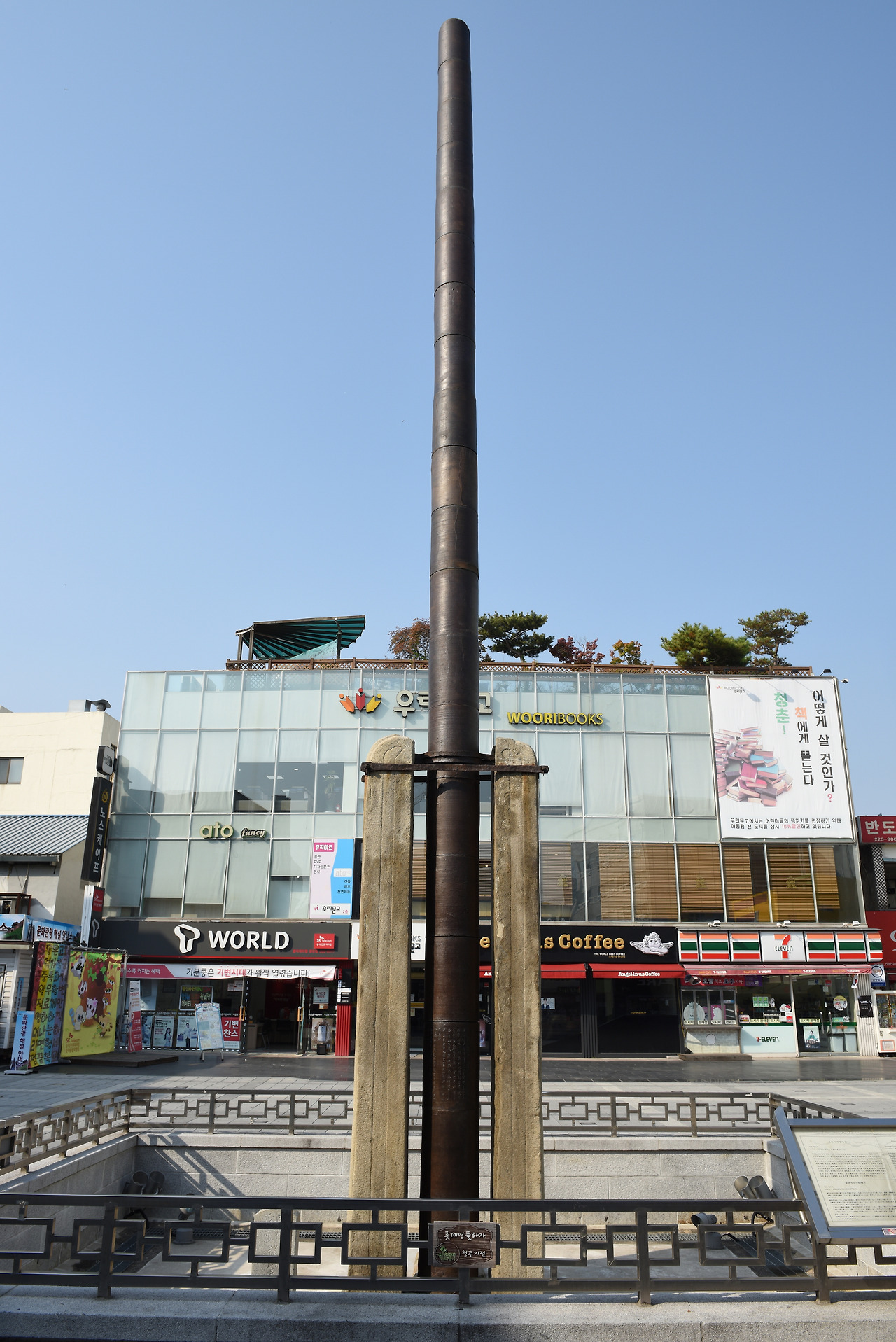Stories of Korea’s National Treasures 41

Photo Credit: Cultural Heritage Administration of Korea
Iron Flagpole Supports at the Site of Yongdusa Temple
(Cheongju, Chungcheongbuk-do)
🏯 1. The Guardians of an Invisible Banner
At the ancient site of Yongdusa Temple in Cheongju stand two tall iron pillars — the Iron Flagpole Supports, silent yet powerful remnants of Silla’s Buddhist faith.
Erected in the 8th century during the Unified Silla period, these iron columns once held aloft a massive ceremonial banner, fluttering in the wind above the temple grounds.
Though the banner itself has long disappeared, the supports remain, embodying both devotion and technical mastery in their enduring strength.
In their stillness, one can almost feel the echo of prayers once carried by the wind — faith rising like a flag toward heaven.
🪨 2. Structure and Craftsmanship
The flagpole supports consist of two tall iron pillars, each about 13 meters high, fixed into a stone base and secured by horizontal iron crosspieces.
They were forged from thick iron plates joined seamlessly, a remarkable feat of metallurgical engineering for their time.
The surfaces bear traces of decorative engravings, and the overall structure reveals both artistic intent and functional precision — strong enough to bear immense weight, yet designed with graceful proportion.
The use of iron, rather than stone or bronze, demonstrates the technological advancement of Silla blacksmithing, which reached extraordinary sophistication in the 8th century.
🌄 3. The Meaning Behind the Flagpole
In Buddhist temples, flagpoles were used to raise sacred banners or sutra scrolls during ceremonies, symbolizing the spread of the Buddha’s teachings across all realms.
Thus, these iron pillars were more than structural supports — they were spiritual conduits, linking the visible and the invisible, the earthly and the divine.
The upward thrust of the flagpole mirrored the Buddhist ideal of aspiration: to rise above ignorance and carry wisdom through the winds of change.
Even now, the surviving pillars stand like ancient sentinels —
guardians of faith whose silence speaks louder than words.
🌿 4. Preservation and Legacy
The Iron Flagpole Supports of Yongdusa Temple Site are the oldest and tallest surviving iron flagpoles in Korea, and among the very few remaining in the world.
Designated National Treasure No. 41, they are invaluable for understanding both the religious practices and metalworking technology of the Unified Silla period.
Today, they stand alone amid quiet fields, their weathered iron darkened by centuries, yet still dignified — proof that true devotion endures not in ornament, but in endurance.
When the wind blows through Cheongju, it is said the air hums faintly around them — as if the invisible banner still waves.
💬 5. A Warm Reflection
“These pillars hold no flag, yet they carry every prayer.
Their strength lies not in what they bear,
but in what they remember —
the faith that once soared on the wind.”
📌 Notice
The National Treasure number indicates the order of designation, not a ranking of value.
For more information, please visit the 👉National Heritage Portal